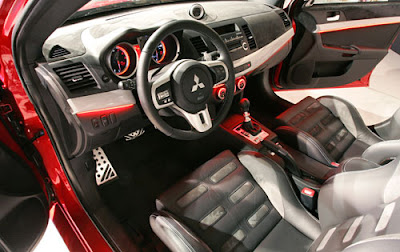


The blog for automobile enthusiasists....for the people who luv the 'Mean Machines' more than anything else in life.....















Safety and special features in international punto:
Brakes are ventilated discs in front with drums at rear; equipped with ABS and electronic brake-force distribution (EBD) on the higher version. Further safety features include brake pedals that will break on impact, while the front seatbelts have pretensioners, load limiters and a fastened sensor. Another important safety feature is the passenger cannot get away with not fastening his belt — an insistent beep will sound until the seatbelt is fastened. I wish this feature must be offered in India as well. You can monitor your driver there is also a boy beep which you can preset it to a certain speed and if driver exceeds that speed, it beeps at you. Punto has been given maximum rating for passenger safety in Euro NCAP (European agency for safety testing). Fiat provides an extensive list for special features; armrest with storage bin, electric power steering (with a city mode, making the steering lighter for easier parking),air conditioning that can be varied for individual passengers,60:40 rear split seats, electric front windows (one touch up and down on driver’s side) and they work without the ignition switched on. On board computer for fuel range, current and average consumption, etc. These features are excellent but all depends on the price of the Indian version.







SPECIFICATIONS
FUEL INJECTION With six-hole type injector.
ECU and sensors backed fuel mixture to maximize the combustion at any rpm
FRONT FAIRING Aero Dynamic Fairing
COOLING Liquid cooling with high efficient compact Radiator to maximize the Stability and Performance
HEAD LIGHT Flash surface dual Head Lights
FRAME High Rigidity Deltabox Frame
REAR SUSPENSION Link Type Monocross
BRAKES Front & Rear Disk Brake
VALVES 4 Valve Combustion Chamber Adopted
COMBUSTION CHAMBER Hemispherical Combustion Chamber with centered plug layout
Air Filter :- High flow paper filter
Handle Grip :- R1 Type Insert Mold Grips
Front Head Cowl :- a-30mm lower than Gladiator b-Aero Dynamic Design
Handle Bar :- a-Semi-Flat type with bar end b-Front Fork c-D.U. Metal (Special Material)
Front Fender :- Aero Dynamic Design 7) Lower Cowling :- Aero Dynamic Design Seat
Leather :- Dimple type/two tone
Grip End :- Race bred grip end
Rear Fender :- Aerodynamic
Muffler End :- Machine Gun Type
Chain Guard :- Half cover sporty looks
Shift Pedal :- Sport toe type Aluminum Shift Pedal
Drive Chain :- Long life sealed chain
Foot Rest :- Aluminum (Rider And Passenger)
Asbestos Free :- Environment Friendly
Tyres
Front - 80/90, Rear - 100/80 17inch tubeless tyres
Wheelbase 1290mm
Width 670mm
Length 1995mm
Height 1070mm
Ground clearance 160mm












